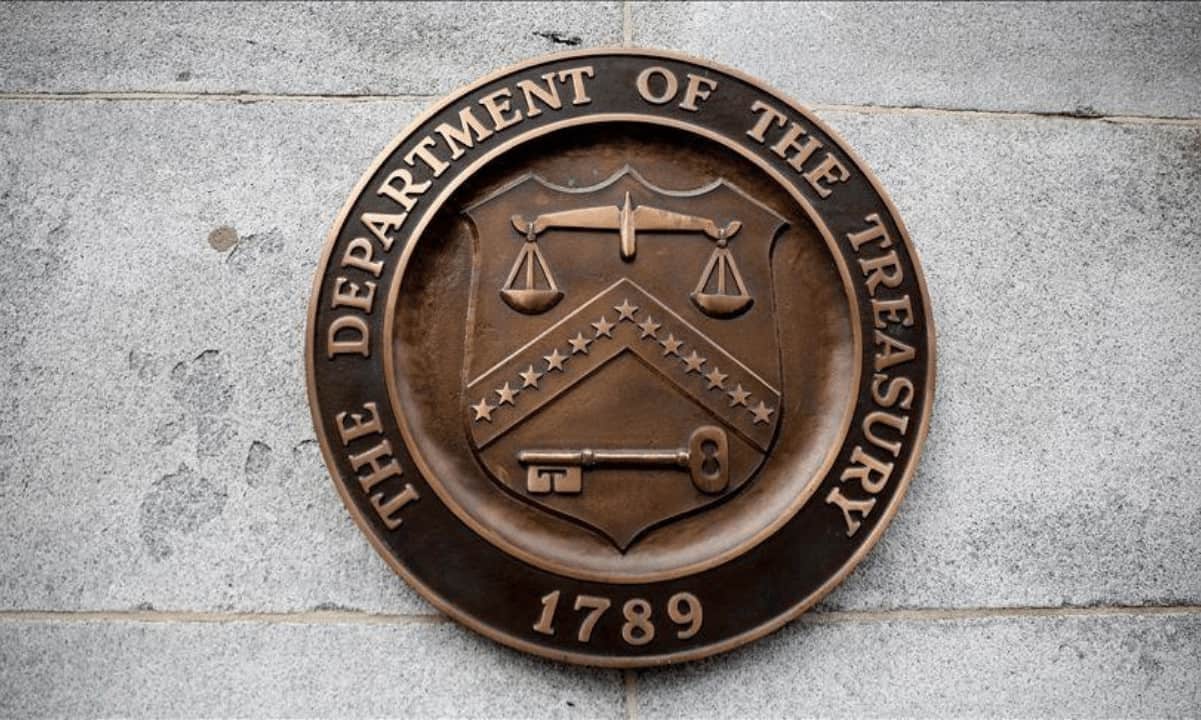Crypto Technical Analysis: Head and Shoulders Pattern, Triangles and Wedges
Finding ways to predict the future movement of an asset has always been the holy grail of traders across the globe, and crypto traders are no different.
Although there are a variety of factors that influence the price of a cryptocurrency in a positive or negative way, such as reaching milestones, partnership signings, hacker attacks, new regulations, etc. Using this information in combination with other methods, such as trend detection, means that it is highly beneficial to master the technical analysis.
However volatile the prices of cryptocurrencies may be, experienced traders can sometimes spot distinct movement patterns, allowing them to predict which way the price is going to go. Therefore, we are going to start explaining the rudiments with three patterns that traders can find when trading on various exchanges.
Head and shoulders
The head and shoulders pattern is a formation that can, to the inexperienced eye, look like a baseline with three peaks.
However, the middle peak is higher than the other two, which are similar in size.
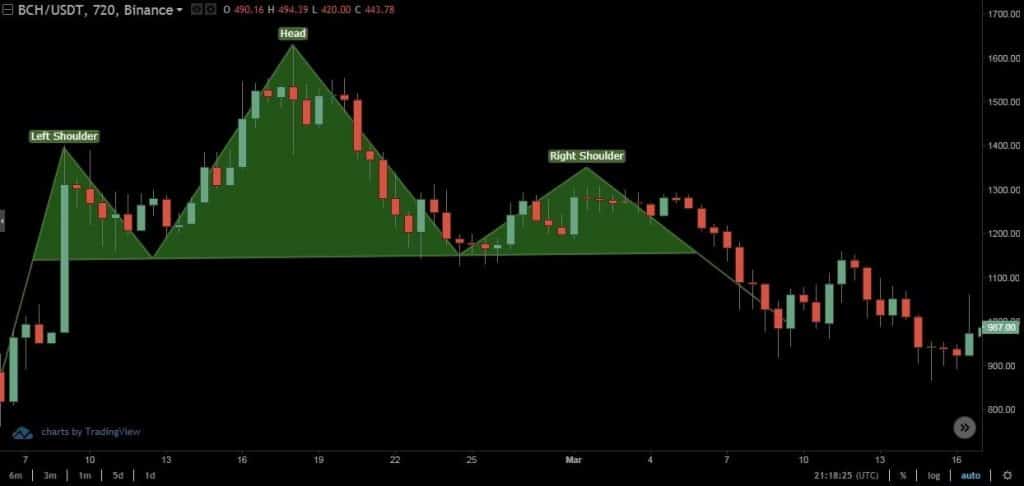
In technical analysis, a head and shoulders (or H&S) pattern predicts a bullish-to-bearish trend reversal and is regarded as one of the most reliable trend reversal patterns which, if spotted correctly, reveal that an uptrend is nearing its end.
As the cryptocurrency market is a constant battle between bulls and bears, the head and shoulders pattern comes after a period of the market’s dominance by bulls.
After the first price stagnation (Shoulder 1), when the price reaches a new high (Head), it is still possible that the bulls will take the price even higher. However, after the price declines for the second time, bulls try to push it up again (Shoulder 2). They don’t succeed, and it becomes evident that bears are starting to dominate the market – the trend reverses.
The targeted price in this reversal is equally distanced from the neckline as is the peak of the head, just in the opposite direction (downward).
When trading the head and shoulders pattern, investors should not assume that the pattern is going to form. Instead, they should wait for the decline after the right peak to reach the neckline, and then take a position, taking into consideration other important signals.
Reversed H & S
There is also a reversed head and shoulders pattern which, contrary to what we described above, marks the end of the reign of the market’s bears, which should also be waited out until the last shoulder forms completely until entering the trade.
Triangles
Triangles come in three forms:
- Ascending
- Descending
- Symmetrical
Ascending triangle
Investors spot an ascending triangle by the price swinging between the constant line of resistance, and rising support.
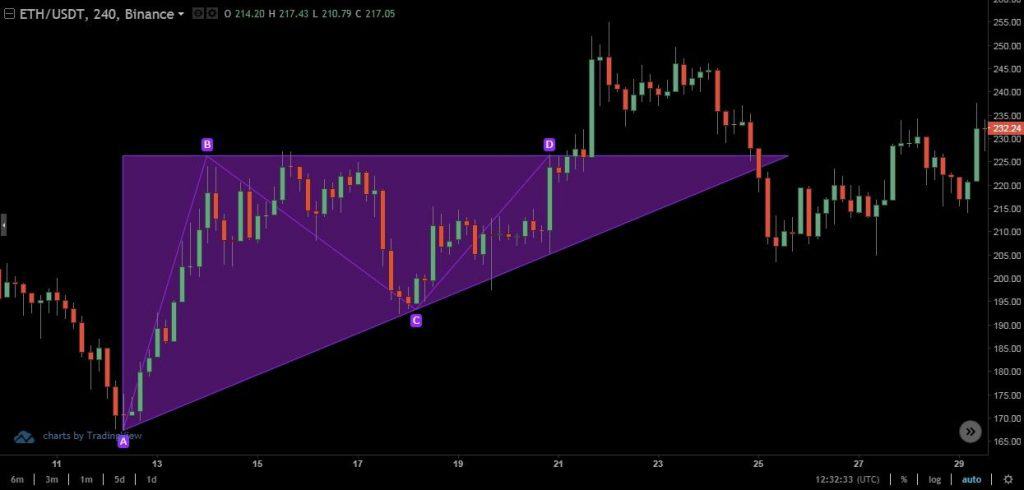
The ascending triangle is considered to be a robust bullish formation, which can lead to massive scores if approached the right way.
Those not careful enough can take a position near the support line, wanting to enhance their gains, to end up with a loss as the price movement turns to the bearish formation of a double or triple top.
Targeted prices can be found by looking at the widest distance between highs and lows, and applied up from the breakout point.
Experienced traders wait for the significant upward breakout backed with a much bigger volume to take a position, as breakouts without inflated volume can catch traders in a bull-trap (like in the chart above).
Descending Triangle
The descending triangle is a typical bearish formation where the price action flows between a steady support line and descending resistance, showing growing mistrust towards the crypto asset.
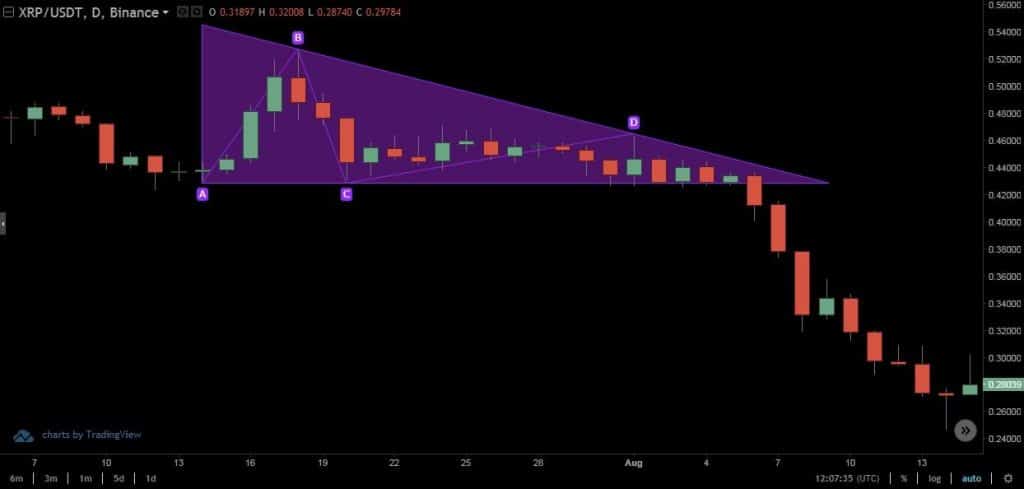
Once a downward breakout happens, it is the confirmation of the pattern, and an investor can expect the continuation of the negative price movement.
As with its ascending counterpart, the target is equal to the widest swing inside the formation transferred from the breakout point downward.
The most famous crypto descending triangle from recent years is the one from 2018 Bitcoin’s chart.
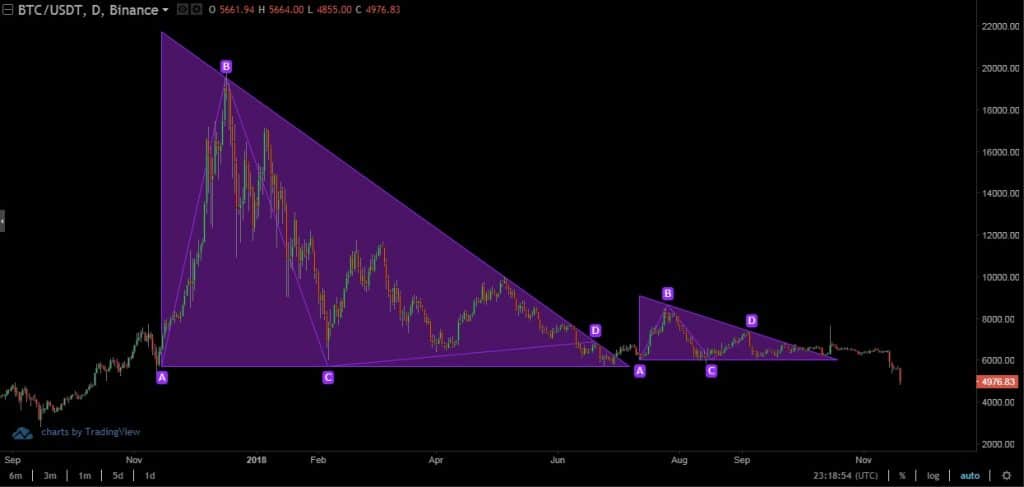
Symmetrical triangle
Now, these triangles are probably the most common in cryptocurrency trading, and at the same time, the most unpredictable.
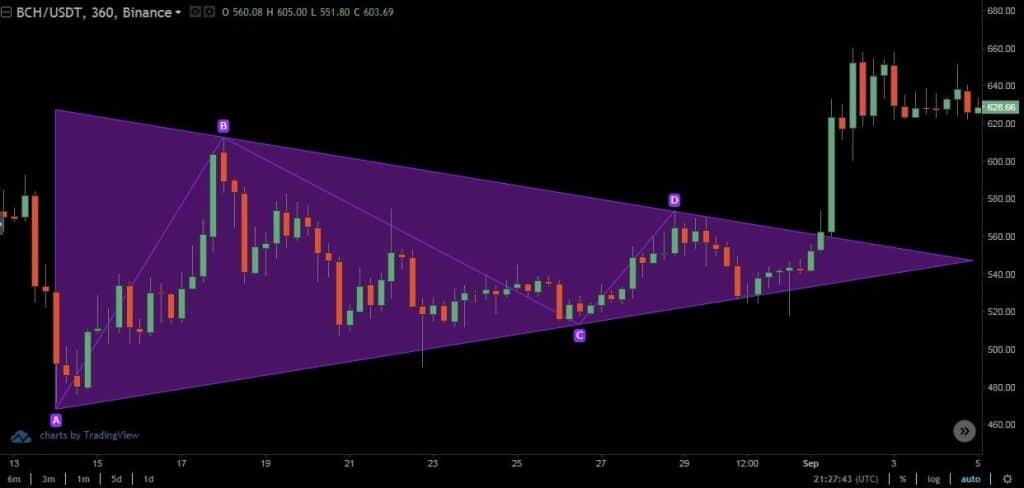
As the symmetrical triangle reaches its closure, the volume of trading becomes smaller as traders are usually indecisive about which position to take. When the war between bulls and bears resolves, there are two kinds of breakouts possible – positive and negative.
Each of the two possible breakout movements will be followed by a much bigger volume than while the action was reaching the triangle’s peak. Therefore, traders have to keep a close eye on the north/south breakout points and act accordingly.
Once the breakout happens, a trader can deduce the target by drawing the parallel with the opposite side of where the breakout occurred. Connecting that parallel line with the base of the triangle, the trader then transcribes the distance between the opening of the triangle to that parallel from the breakout point to mark the targeted price.
Wedges
Wedges are also very common formations in crypto trading and are widely considered as a multiple price wave reversal patterns.
That means that, inside a wedge, the price action swings from highs to lows multiple times until it breaks out of the pattern.
There are two kinds of wedge formations:
- Rising
- Falling
Rising wedge
Unlike the ascending triangle formation, in the rising wedge, the price swings travel through highs and lows, which are both getting higher. It is a formation that announces that a bullish trend will reverse into a strong bearish sentiment.
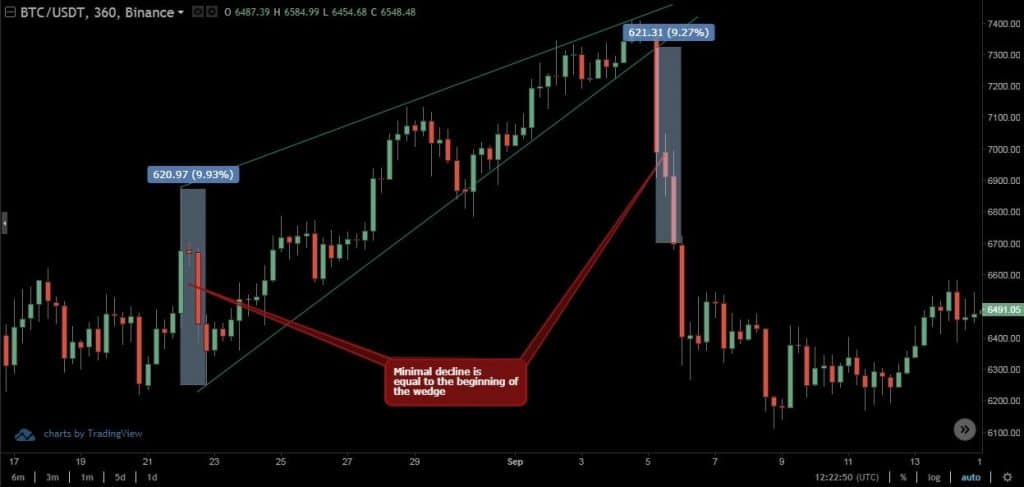
Usually, the price range of the wedge’s opening reveals the minimal price decline after the eventual downward breakout.
Falling wedge
The falling wedge formation looks like the mirror image of the rising wedge, but it is considered to be announcing a bull-run once the eventual reversal happens.
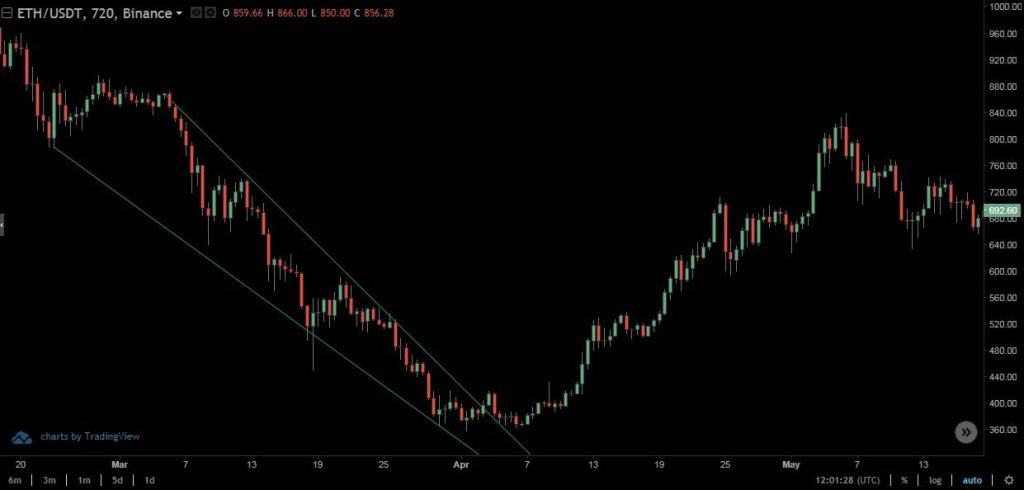
It is advisable for traders to wait for the confirmation of the breakout before taking the long position as the bullish sentiment after the falling wedge can be significant.
The minimum targeted price for the descending wedge is the exact opposite of its ascending counterpart.
It is important to notice that, in the cryptocurrency market, peaks don’t have to follow highs and lows in an exact straight line necessarily, but are close enough in the price range to mark the formation.
The post Crypto Technical Analysis: Head and Shoulders Pattern, Triangles and Wedges appeared first on CryptoPotato.





